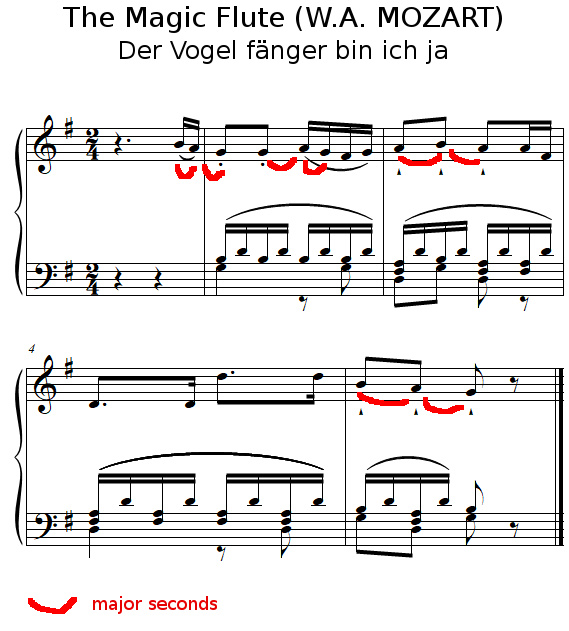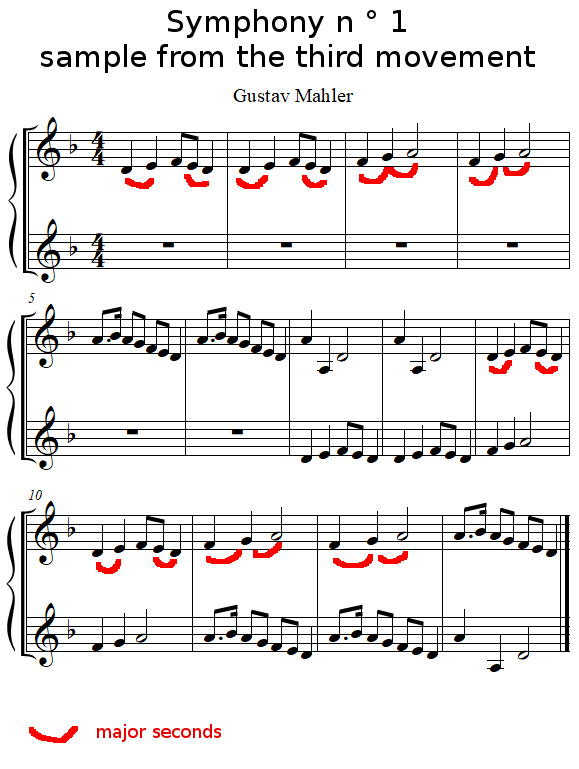In music theory, a major second is an interval that has two half steps 

The major second requires that:
- The interval must be a second interval (two note names between the first and the last).
- The interval must have two half steps.
What does a major second look like?
Here is an example of a melodic major second (two music notes in a melody) and a harmonic major second (in a chord):

How to recognize a major second?
Rule of music theory: All intervals in a major scale starting with the tonic (degree I) are either major or perfect, and only unison, octave, fourth and fifth are perfect (the others are major).
Example with the interval B♭ / C:
Let's take the B flat major scale to have B♭ as the tonic:

From the rule stated above, it becomes clear that B♭ / C is a major second.
Inversion of the major second
The inversion of the major second is the minor seventh.
Here is an example of a minor seventh:

Musical examples of major second
The Magic Flute (W.A. MOZART), Der Vogel fänger bin ich ja
In the aria Der Vogelfänger bin ich ja (Yes, I am the bird catcher) by W.A Mozart sung by character Papageno, there is a succession of major seconds:

Canon of the symphony no.1 by Gustav Mahler
Canon of Gustav Mahler's Symphony No.1 also features many major seconds:

Interval identification game
You will find this interval in my Intervals identification game:


